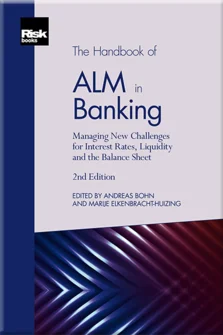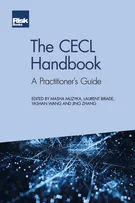Replication of Non-Maturing Products in a Low Interest Rate Environment
Florentina Paraschiv and Michael Schürle
Introduction
Bank Capital and Liquidity
ALM in the Context of Enterprise Risk Management
The New Basel Standards on IRRBB and Their Implications for ALM
Measuring and Managing Interest Rate and Basis Risk
The Modelling of Non-Maturity Deposits
Modelling Non-Maturing Deposits with Stochastic Interest Rates and Credit Spreads
Managing Interest Rate Risk for Non-Maturity Deposits
Replication of Non-Maturing Products in a Low Interest Rate Environment
Managing Mortgage Prepayment Risk on the Balance Sheet
Considerations for ALM in Low and Negative Interest Rate Environments
Credit Spreads
Hedge Accounting
Supervisory Views on Liquidity Regulation, Supervision and Management
Measuring and Managing Liquidity and Funding Risk
Managing Reserve Assets
Instruments for Secured Funding
Asset Encumbrance
Capital Management
A Global Perspective on Stress Testing
Reverse Stress Testing: Linking Risks, Earnings, Capital and Liquidity – A Process-Orientated Framework and Its Application to Asset–Liability Management
XVAs and the Holistic Management of Financial Resources
Optimal Funding Tenors
Funds Transfer Pricing in the New Normal
Balance-Sheet Management with Regulatory Constraints
The risk management of non-maturing products is an important challenge for most banks, particularly for those with significant retail business. This task is complicated by the inherent options of these products: clients may add or withdraw volumes any time, and the product rate can be adjusted by the bank as a matter of policy. Both properties make future cashflows uncertain. Usually, non-maturing products are replicated by a portfolio of fixed-maturity instruments. Popular approaches are based on static investment or funding rules where the portfolio weights are determined with the aim of minimising the volatility of the margin between the average portfolio rate (or opportunity rate) and the product rate. In the past it was common to determine these weights based on the analysis of historical data. Due to the unprecedentedly low level of interest rates in the aftermath of the financial and the European debt crisis, it is often advocated that the portfolio composition should be adapted to a scenario of future interest rates and product data.
We provide examples showing that static rules are inefficient in both cases. As an alternative, we propose a novel method that we call
Copyright Infopro Digital Limited. All rights reserved.
You may share this content using our article tools. Printing this content is for the sole use of the Authorised User (named subscriber), as outlined in our terms and conditions - https://www.infopro-insight.com/terms-conditions/insight-subscriptions/
If you would like to purchase additional rights please email info@risk.net
Copyright Infopro Digital Limited. All rights reserved.
You may share this content using our article tools. Copying this content is for the sole use of the Authorised User (named subscriber), as outlined in our terms and conditions - https://www.infopro-insight.com/terms-conditions/insight-subscriptions/
If you would like to purchase additional rights please email info@risk.net






